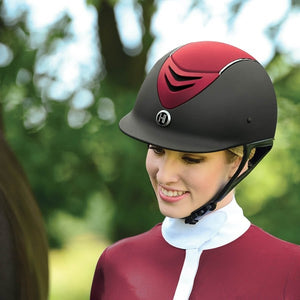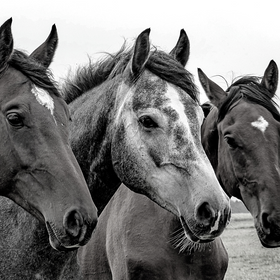
Shoeing vs. Barefoot - Which is Better?
A hotly debated topic in the horse world - to shoe or not to shoe. If you want a spirited discussion, ask any equestrian their opinion on barefoot versus shoes. And, while this might be a controversial answer, we believe both options are right depending on your horse and what they are doing. Horses with good conformation and good hooves can be perfectly comfortable barefoot, while horses with structural issues or ones that are being ridden over diverse terrain can benefit from the support and protection of a shoe. We’ve compiled a list of considerations for both barefoot and shod methodologies to help you determine the best route for your horse and their activities.
Barefoot Method
Some horses do very well going barefoot with regular trimming. When you are considering whether or not your horse should go barefoot, evaluate their conformation first. Is your horse prone to abscesses, bruises, or cracks? If your horse suffers from these issues, it is likely they will have more of a challenge barefoot. In some cases, horses’ hooves will toughen up, but not always.
Next, consider the footing your horse lives in and what terrain you are riding on. If a horse lives on soft pastures and is ridden on rough, rocky trails, they won’t have much opportunity to toughen up their hooves and will likely be sore. However, if your horse lives on pasture and is always ridden in a sandy area, they won’t need to toughen up their feet. Temporary boots can also be used if your horse is occasionally on hard surfaces and has not had time to toughen their feet.
Converting from shod to barefoot can take between 30 and 90 days depending on the horse. This period of time allows the hoof to strengthen and adjust to losing the protection of the shoes. During this transition period, consider light work or no work for your horse to reduce possible stress on the hooves. You can also walk them on harder surfaces for 10 minutes per day to help strengthen their feet. Do not do this extensively as it can lead to soreness in the early days of the transition.
Shoeing
Most equestrians are very familiar with shoeing. Horses in need of corrective shoeing, with conformational issues, or in heavy work over diverse footing can benefit from shoeing. Shoeing for horses being ridden in cross country, dressage, and jumping disciplines tend to need the support of shoes and often perform better with them. Police horses or horses commonly on paved roads tend to work well with the support of a shoe, and generally protective pads.
Corrective shoeing can be used to help address numerous hoof issues and help make these horses more comfortable. Laminitic horses, for example, often benefit from supportive shoes and pads. Corrective shoeing is a specialized practice and requires a very skilled farrier to help make horses with conformational issues or hoof ailments more comfortable.
Just as with the barefoot method, consider your horse’s conformation, where they live, and where you ride in order to make the best decision for them.





